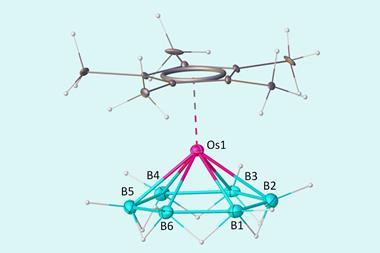A technological leap may be called for to expand the number of elements in existence
Four new elements have just been added to the periodic table completing the table’s seventh row. But despite elements 113, 115 and 118 all being discovered in the early 2000s and 117 in 2010, there’s still no sign of elements 119 and beyond. Why has no one claimed to have created one of these new superheavyweights and when will chemists be able to start an eighth row on the periodic table?

Since Edwin McMillan and Philip Abelson synthesised the first transuranium element neptunium in 1940, a steady stream of new elements has filled the lower rows of the periodic table. Each time a group claims to have synthesised a new element the International Union of Pure and Applied Chemistry (Iupac) must weigh the evidence presented. Typically the claim of the first synthesis of a new superheavy element comes many years before enough evidence is gathered to get the nod of approval from Iupac. This is what makes the absence of any claim on the creation of element 119 or beyond surprising. But while no group has yet claimed to have created an element that belongs on the eighth row of the periodic table it isn’t from lack of trying.
To create a new element, a heavy element target is bombarded with highly accelerated lighter element projectiles. As early as 2007, researchers at the Joint Institute for Nuclear Research (JINR) in Dubna, Russia, and the Helmholtz Centre for Heavy Ion Research (GSI) in Darmstadt, Germany, tried to synthesise unbinilium or element 120 by bombarding plutonium with iron and uranium with nickel, respectively. However, both teams only observed an assortment of lighter nuclei and particles. In order for scientists to be confident that they really have made a new element, they must follow the new element’s signature decay chains, explains James Roberto, associate laboratory director at Oak Ridge National Laboratory (ORNL) in the US.
Targeting new technologies
Firing calcium projectiles at a very heavy actinide target worked well for producing elements 114 to 118, but for even heavier elements the likelihood of creating a new element this way declines. An apparently simple solution would be to just fire more and heavier projectiles at the target.

Current accelerators hit the target with about 1012 projectiles every second. But ‘hitting the target with an even higher number of projectiles would actually burn the target’, explains ORNL physicist Krzysztof Rykaczewski. ‘And you can burn your detector, too. We need better technology to avoid this. You could also make the target much larger and spread the projectile beam over its larger area,’ he adds – but making these actinide targets is not easy. Synthesising the 20mg of berkelium used to produce element 117 took more than two years. The Superheavy Element Factory that is being built at Dubna will have improved detection capabilities and be able to generate beams with significantly higher intensities, but ‘additional breakthroughs will be needed to continue beyond element 120’, says Roberto.
However, researchers remain positive. ‘Within one generation’s lifetime we will probably reach element 124,’ speculates Rykaczewski. Eric Scerri, a chemistry historian at the University of California, Los Angeles, US, agrees: ‘Fifteen years ago it was inconceivable that anyone would ever get as far as we got.’ The hunt for new elements, he adds, has been and will be driving technology development.
One idea to overcome the limitations of current heavy element synthesis techniques is to induce nuclear transfer reactions. If you fired uranium at a uranium target the nuclei will never fuse, explains GSI researcher Christoph Düllmann. But the colliding nuclei can exchange protons and neutrons when they collide. ‘In some cases that might lead to a product that happens to have, for example, 120 protons,’ Düllmann says. ‘This may be a path to access isotopes that are not reachable by fusion reactions.’
Pushing the boundaries
Most superheavy elements’ very limited lifetimes prevents their use in real-world applications. Studying them, however, tests scientists’ understanding of the atomic nucleus. ‘If you’d like to test a car that you are considering buying, you should not just make two turns on the parking lot but test it under hard conditions,’ says Rykaczewski. Similarly, testing nuclear models under extreme conditions helps researchers choose those that make the best predictions.

Calculations are fuzzy on exactly how much larger the periodic table can get. Physicist Richard Feynman predicted element 137 to be the limit. ‘The calculation is simply based on Einstein’s theory of relativity,’ says Scerri. When atomic nuclei get larger and larger the electrons have to go faster and faster. Once you reach a certain size calculations predict that the electrons have to go faster than the speed a light – a physical impossibility. Other calculations predict this will happen much later, however, around element 170.
While the four latest additions to the periodic table are highly radioactive and decay in less than a minute, scientists expect to find an island of stability centred around elements 120, 124 or 126. These elements’ ‘magic’ proton and neutron numbers correspond to filled nuclear shells. Just as fully filled valence electron shells make elements such as the noble gases chemically inert, filled neutron or proton shells increase the nucleus’ stability.
Researchers hope that unbinilium’s or unbihexium’s (element 126) doubly magic isotopes, containing both a magic proton number and a magic neutron number, would be even longer lived than their other isotopes – though half-life estimates vary wildly from a few microseconds to millions of years. Researchers have already seen increasing stability of known superheavy elements when in isotopes with neutron numbers closer to the magic 184. ‘The holy grail in superheavy element synthesis is to reach this neutron number,’ says Düllmann. ‘But the problem is that we currently don’t have two nuclei that will give us a superheavy element that also has that many neutrons.’












No comments yet